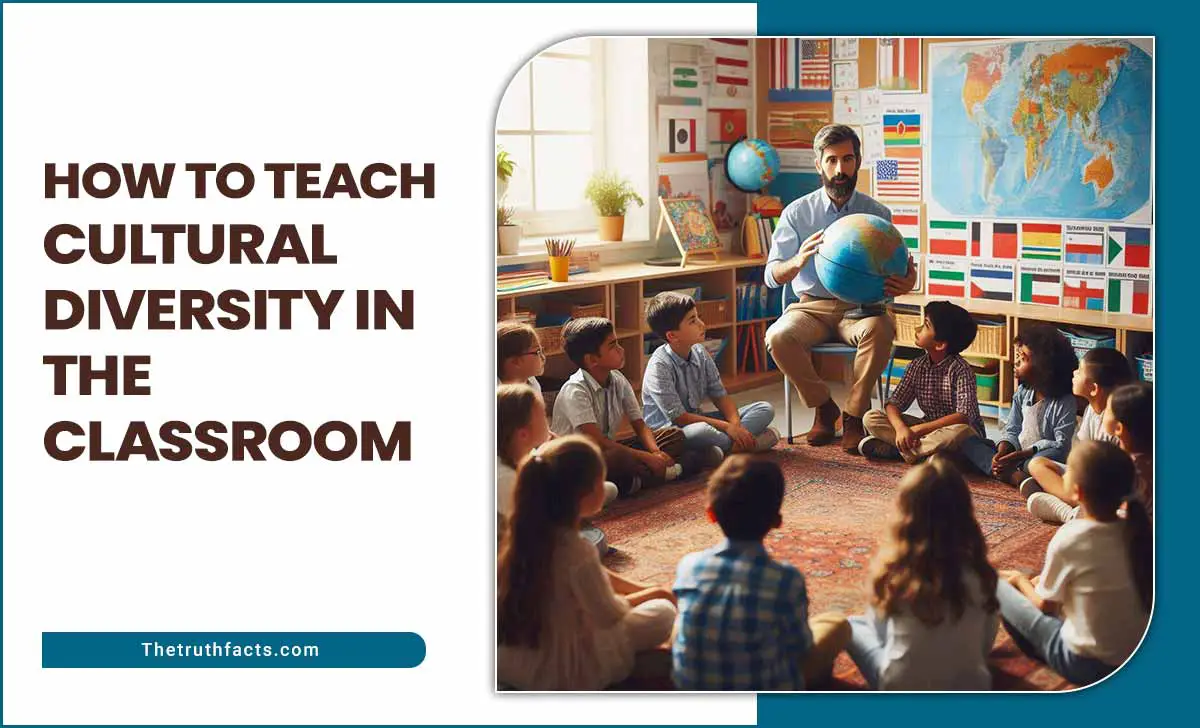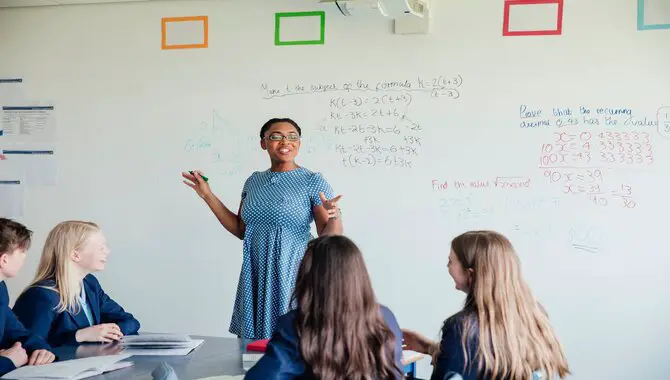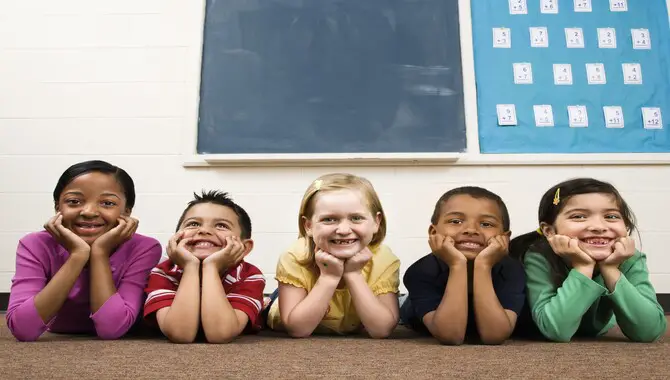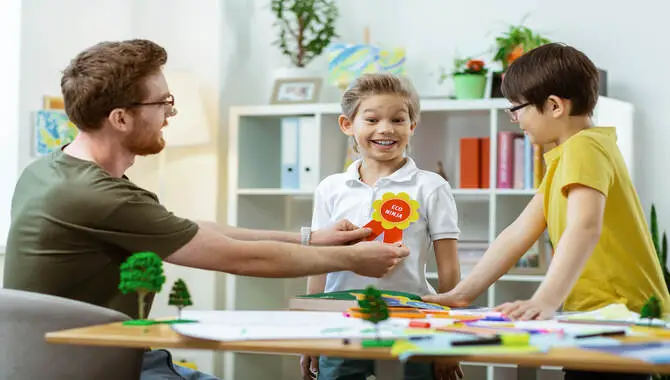In the classroom, we are constantly surrounded by diverse groups of people. These groups include ethnicities, sexualities, geographical areas, socioeconomic backgrounds, and abilities.
Our ever-changing environment and inclusive education are vital to facilitating students’ growth. Because our environment may be diverse and inclusive, educators must ensure students feel included and supported. Teaching cultural diversity can help facilitate students’ growth by providing students with different backgrounds, experiences, and viewpoints.
It allows students to see their world differently and understand different views on history, literature, science, politics, etc. This blog will cover various tips for teaching cultural diversity in the classroom to help educators create an inclusive environment for all students.

10 Tips To Teach Cultural Diversity In The Classroom

As a teacher, it’s essential to recognize and understand different cultural groups and their customs. This will help you prepare your students about other cultures inclusively. You can use stories, songs, and art to spark interest and focus on different aspects of culture.
You can encourage students to learn about other cultures by allowing them to participate in cross-cultural activities during school trips or programs. This will help students develop positive attitudes toward diverse cultures. You can also foster an appreciation of cultural diversity through events like national celebrations of ethnic or religious groups or by creating classroom environments that celebrate different cultures and backgrounds.
1.Be Aware Of Your Own Biases.
Being aware of your biases when teaching cultural diversity in the classroom is essential. Having a plan for addressing students’ questions and concerns about cultural diversity is vital. It would be best if you prepared to provide examples of different cultures so students can better understand different cultural perspectives.
Creating a classroom environment that values respect for all people is essential. It is vital to ensure that students learn about and appreciate cultural differences in the classroom. Taking these steps ensures that your students learn about diverse cultures and perspectives inclusively and respectfully. It is vital to create a classroom environment that values respect for all people, regardless of their cultural background or perspective.
2.Start With General Concepts And Expand Upon Them.

Teaching cultural diversity in the classroom can be a daunting task. The start is an excellent resource for teachers who teach cultural diversity in an engaging and meaningful. Each issue of Tart features articles on a specific topic related to cultural diversity, which can be used as general concepts or expanded upon to provide more depth and detail.
When teaching cultural diversity, it is essential to be thoughtful and intentional about approaching the topic. Using Tart, teachers can create engaging and meaningful lessons tailored to their students’ needs. By considering different perspectives and exploring different cultures, teachers can help students learn about different ways of living and thinking critically over time.
3.Se Visual Aids And Examples When Possible
Visual aids and examples are essential when teaching cultural diversity in the classroom. Visual aids help students understand different perspectives and can effectively engage students in a lesson. Graphical models can help students understand other cultural behaviors and ways of living.
Additionally, providing students with opportunities to share their cultural experiences will help foster tolerance within the classroom. By using visual aids and examples, you can help students learn about different cultures and build empathy for others.
4.Please Encourage Students To Share Their Own Experiences.
When teaching cultural diversity, it is essential to encourage students to share their personal experiences and perspectives about cultural diversity. Encouraging students to share their experiences and views about cultural diversity helps them develop critical thinking skills. It also allows them to explore different viewpoints on cultural differences and better understand other cultures.
By challenging students to think about how their own culture affects how they view other cultures, teachers help students appreciate the diversity of cultures through hands-on activities and exhibits.
It’s also helpful to teach students about the history and significance of different cultures and other communication methods, such as role-playing or debates. To celebrate diversity in the classroom, promote social justice by creating inclusive classroom environments that allow all students to participate and share their thoughts and ideas.
5.Address Any Questions Or Concerns That Students May Have
It’s vital to be aware of the cultural diversity of your students before you begin the class. Try to provide context for different cultural experiences in your classroom—design activities and lessons that are culturally relevant to your students. Please encourage students to share their own cultural experiences in the class.
Remember, cultural diversity can provide rich learning for all students. It is essential to be patient and understanding when it comes to student questions and concerns about cultural diversity.
6.Ake A Multicultural Perspective When Selecting Materials For The Class

It is essential to have a multicultural perspective when selecting materials for your cultural diversity class. Some materials that can teach cultural diversity include books, videos, and games. You can use books as resources for discussion or homework assignments. Video and game materials can illustrate points or help students understand different viewpoints on a topic. It’s also important to consider how the material will be used in the classroom.
Books can be used as resources for discussion or homework assignments. When selecting materials for your cultural diversity class, think about how the material will contribute to the overall goal: learning more about another culture and diverse perspectives.
7.Reward Students For Participation And Effort

Rewarding students for participation and effort is a program that rewards students for promoting cultural diversity. This program allows students to earn points for participating in cultural activities at school. These points can be redeemed for items from the school store, such as chocolate bars or stationery, or used to buy gifts for classmates.
Some schools also organize special events and activities designed to promote cultural diversity. These events may include field trips, art exhibitions, or artistic presentations. By rewarding students for their participation and leadership in promoting cultural diversity in the classroom, teachers help create a welcoming and inclusive environment for all students.
Teaching cultural diversity in the classroom can be a fun and rewarding experience for teachers and students. By fostering Intercultural Understanding and respect, teachers can help build a diverse and inclusive school community that supports all students’ academic achievement and growth.
8.Encourage Critical Thinking
Empathy and compassion are vital traits for students to develop in today’s diverse society. Encouraging students to think about cultural diversity critically is an excellent way to accomplish this goal. Critical thinking skills allow students to have a more complex understanding of the world around them.
This can lead to better necessary thinking skills and a greater sense of social justice. By fostering critical thinking in your classroom, you can help students build a more nuanced and inclusive understanding of our diverse community.
It’s essential to start by discussing key concepts related to cultural diversity, such as different ethnicities, religious groups, or sexual orientations. You can also introduce different perspectives and engage students in thoughtful debates about issues related to cultural diversity. Allow students to share their own experiences and perspectives on cultural diversity.
Finally, ask students to critique media representations of cultural diversity, such as movies or books. This will allow them to think critically about how cultural stereotypes are portrayed in the media and challenge these stereotypes through their analysis and arguments.
By integrating cross-cultural activities into your class curriculum, such as cooking or art appreciation, you can help foster a culture of acceptance and appreciation for different cultures in your classroom.
9.Alorize Diversity

It’s essential to teach cultural diversity in the classroom. There are various ways to do so, from role-playing exercises to having students discuss different cultures. It’s also essential to ensure students have access to diverse books, movies, and music.
By implementing these tips, you can help your students learn about different cultures and appreciate their cultures more. Diversifying your classroom and fostering a culture of respect and Understanding will help your students grow and succeed in all areas of their lives.
10.Reward Students Who Demonstrate Excellence In Cultural Diversity Awareness

As a teacher, it is essential to recognize and reward students who demonstrate excellence in cultural diversity awareness. When teaching cultural diversity, it’s necessary to encourage students to take a proactive approach and show their knowledge of different cultures. Some ways to reward students include assigning community service or homework related to cultural diversity.
Other ideas include having a Diversity Awareness Day in the school calendar or creating a classroom climate of respect and Understanding. These steps can help create a diverse and inclusive classroom that supports all students’ academic, social, and emotional needs. We can successfully integrate multicultural students into our classrooms by creating an environment that promotes Understanding and respect for different cultures.
Importance Of Cultural Diversity In The Classroom

Under the banner of cultural diversity, educationists and practitioners across the globe have continuously emphasized the need for inclusive and sensitive pedagogy in schools.
A diverse classroom environment allows students to learn from different perspectives and increases awareness about other cultures. This helps to foster creativity and innovation among students.
Students benefit from cultural diversity too. It opens their minds to different cultures and worldviews, thus making them more aware and respectful of diverse backgrounds. Besides, they learn to appreciate other cultures and become inclusive members of society.
To teach cultural diversity effectively in the classroom, you can use relevant activities and materials for your students. You can also encourage student participation in creating and sharing resources on various cultures.
Conclusion
This is just a satheir different perspectives cultural aspects in the classroom. Including diverse perspectives and ideas in your curriculum is simple, but it takes practice and patience to do so. When you address cultural diversity in your classroom, show students that you value their input and experiences and encourage them to speak up whenever they have questions or concerns.
You can also use visual aids and examples, such as pictures or videos, to illustrate your points. By making an effort to incorporate cultural diversity in your classroom, you are helping students understand one another better, strengthening the learning environment, and ensuring a more inclusive environment for all.
Frequently Asked Questions
How Do You Teach Culture In The Classroom?
One way to teach culture in the classroom is to have students participate in interactive activities. This can include conducting interviews with different cultures, creating art related to other cultures, or participating in cultural debates.
You can also have students watch videos or listen to audio clips about different cultures. This will help them understand other cultures and how they differ from their own.
What Are Examples Of Cultural Diversity In The Classroom?
Cultural diversity can refer to anything from religion, ethnicity, and language to different food tastes and hobbies. Educators need to be aware of the different cultural perspectives of their students to foster a tolerant and inclusive classroom environment. One great way to introduce cultural diversity into the classroom is by engaging in interactive activities and discussions. This way, students get a sense of Understanding and appreciation for different lifestyles.
What Are The 5 Ways To Include Different Cultures In Your Classroom?
You can do so in five different ways when it comes to incorporating different cultures in your classroom.
1.Educate yourself about different cultures and try to understand better how people from different backgrounds interact.
2.Make sure your class knows cultural differences and how to interact with people from different cultures appropriately.
3.Have students research a specific culture and bring information about it to class.
4.Have students create a project that focuses on cultural diversity.
5.Have students participate in a global simulation or activity incorporating a different culture.
What Activities Can Be Done For Learners In A Diverse Classroom?
A diverse classroom can be great by implementing different activities engaging learners. Some possible activities include:
1.Interactive learning: This can involve using tools or games that allow learners to work together to solve problems.
2.Group work: This can be done through different projects or interactive classroom debates.
3.Role-playing: This is an excellent way for learners to learn about different cultures by performing various roles in an educational setting.
How Can I Help My Students To Understand And Appreciate Different Cultures?
When teaching students about cultural diversity, one of the most important things you can do is start with understanding your own culture. This way, students will be less likely to judge or misunderstand other cultures based on their limited knowledge and experience.
Next, encourage students to ask questions about different cultures. Please enable them to observe things from other cultures and try to understand their different perspectives.

I’m a writer and blogger who loves to talk about entertainment, culture, and relationships. I love to share my thoughts and insights on these topics, and I’m always looking for new ways to engage with my readers. I’m also a big fan of learning new things, so I’m always exploring new areas of interest.
